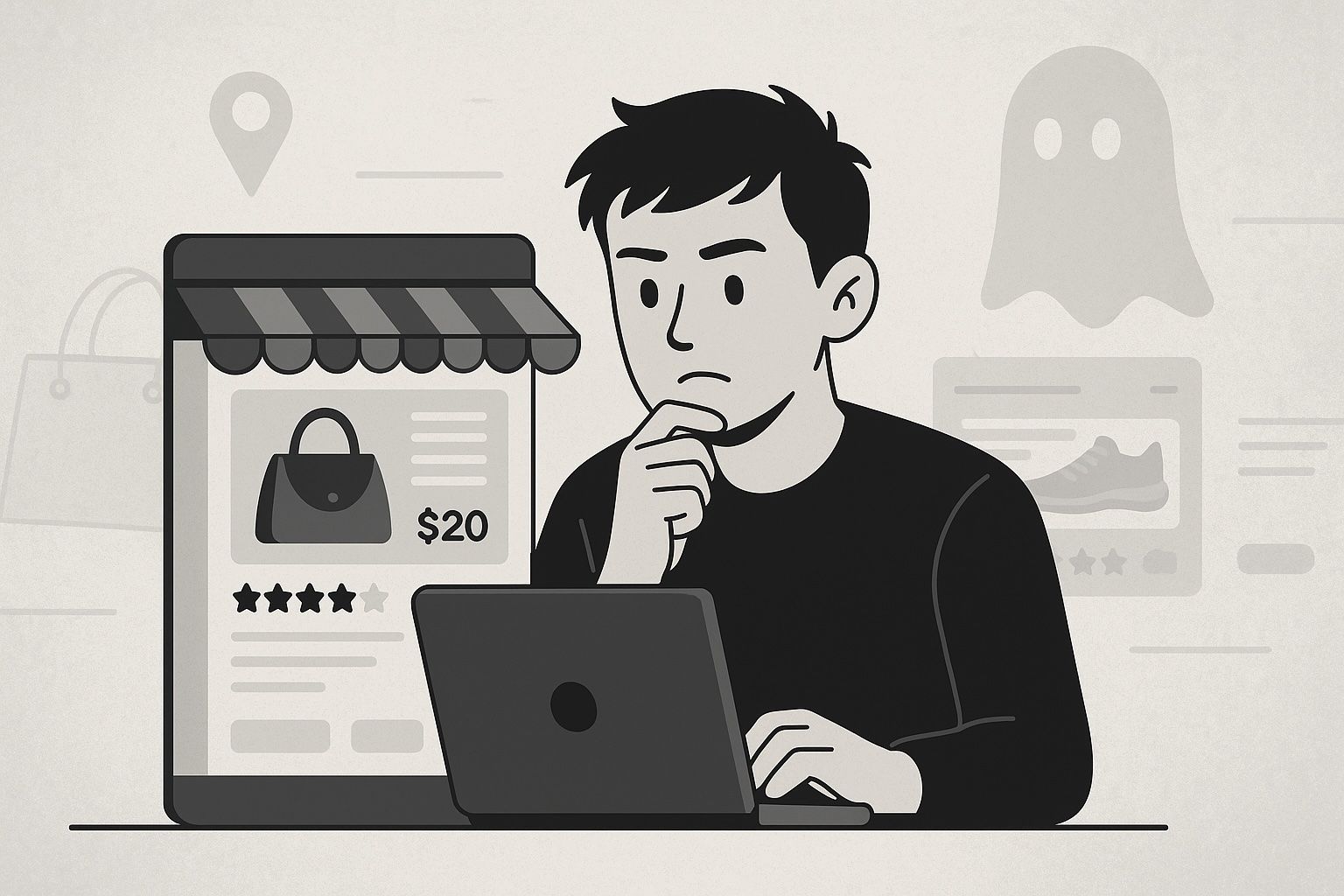Introduction
In recent months, a worrying trend has emerged in the world of eCommerce: the rise of so-called ghost stores. These are online shops, often hosted on Shopify, that appear legitimate but are built solely to deceive consumers. Unshipped products, counterfeit brands, stolen user data — these are just some of the issues linked to such sites.
For honest merchants, the consequences can be serious. Beyond the reputational damage to the platform itself, these scams erode trust in specific product categories or even in legitimate brands that are being impersonated.
How to Spot a Ghost Store
Ghost stores are carefully crafted to look credible. They often use:
Professional-looking templates
Unrealistically low prices
Fake security badges or fabricated reviews
Brand names that closely resemble well-known labels
Because creating a store on Shopify is fast and easy, it becomes difficult for consumers to tell a real store from a fake one. Often, these ghost stores run ads on social media claiming to be legacy brands going out of business, offering “last chance” deals to generate emotional urgency — a classic tactic in this playbook.

Ghost stores — also known as fake shops — are fraudulent eCommerce sites built to lure thousands of users with deals that are simply too good to be true. Behind polished visuals and persuasive pricing lies a scam operation ready to disappear within days.
A joint investigation by Le Monde, The Guardian, and Die Zeit uncovered a vast network of over 76,000 fake domains, with more than 850,000 victims across Europe and the U.S. The financial damage? Several million euros.
The stories are nearly identical: someone finds a designer bag or sneakers for €20, has doubts, but proceeds with the purchase. In the end, the item never arrives — or what arrives is low-quality junk. The amount seems minor, the anger fades, and the scammers walk away — thousands of times over.
The problem is further complicated by grey-area dropshipping: sellers who don’t manage inventory themselves but rebrand and ship products from Asia, often with excessive delays and poor quality control.
Impact on the Reputation of Genuine eCommerce Brands
Every time a consumer is scammed, trust in online shopping takes a hit. And that loss of trust doesn’t just affect the ghost store — it ripples across the entire ecosystem:
Small brands face increased skepticism
Consumers hesitate to buy from lesser-known shops
The cost of building trust (e.g., through reviews, certifications, reassurance campaigns) keeps rising
What Merchants Can Do to Protect Themselves
For legitimate merchants, prevention is key. Strengthening digital identity can make a real difference:
Maintain an official presence across multiple channels (social media, marketplaces, comparison engines)
Use genuine trust badges and verified reviews
Monitor online mentions of your brand name (using brand protection tools when possible)
The Role of Tracking in Spotting Anomalies
Advanced tracking can help identify suspicious patterns, such as:
A sudden spike in traffic from unknown sources
Referral visits from domains similar to yours, but unofficial
Unusual bounce rates or refund activity
Tools like Innex DATA, with their ability to monitor user behavior, traffic sources, and on-site touchpoints, are essential to detecting and responding to potential threats early — while also reinforcing the legitimacy of the real store.
Conclusion
The ghost store phenomenon is likely to grow, especially as the technical barriers to launching an eCommerce site continue to fall. But so do the opportunities to defend against it. A mix of transparent communication, a robust brand presence, and smart tracking systems can make the difference between a trusted online business — and one mistaken for a fraudulent clone.
 Back to blog
Back to blog









